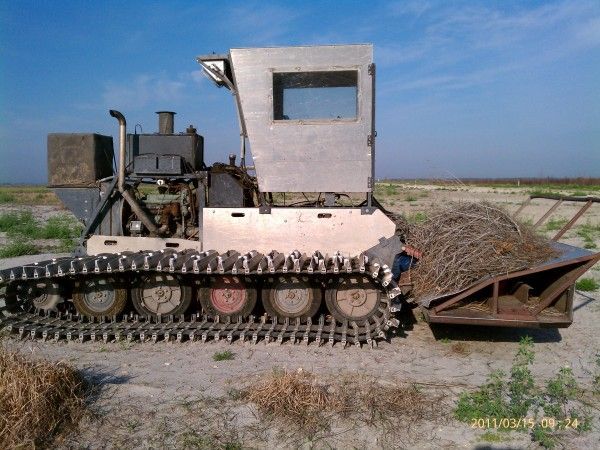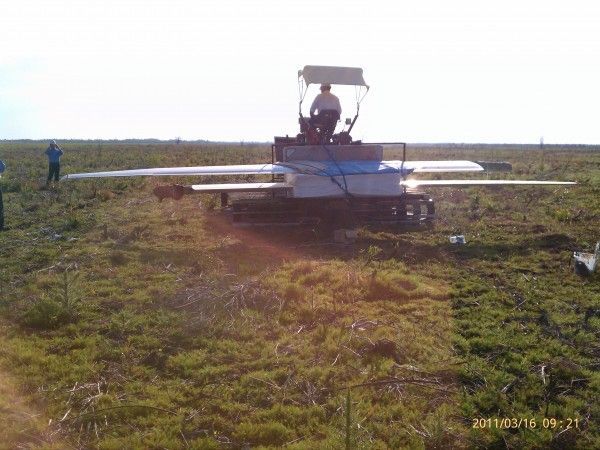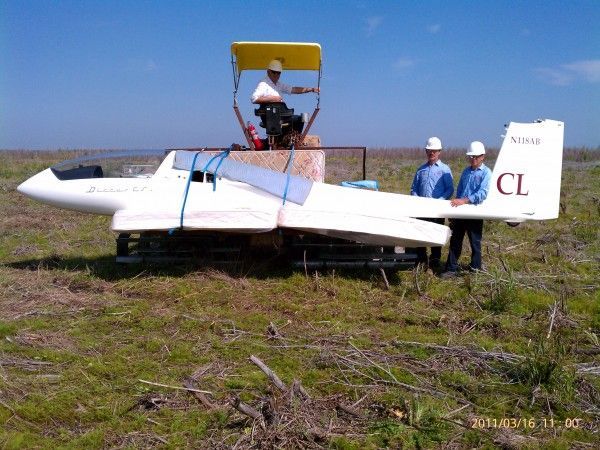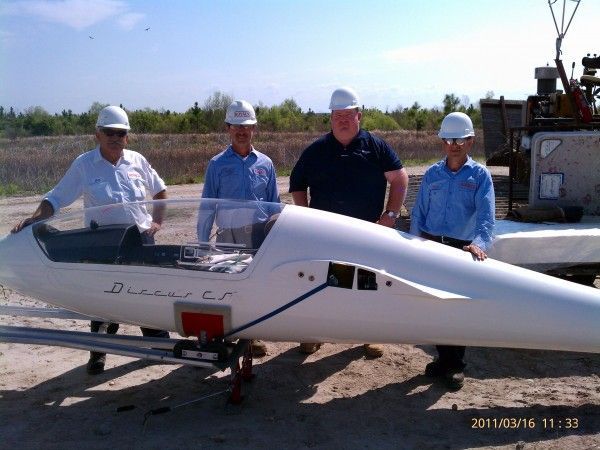In a healthy safety culture, one who makes a grievous error is encouraged to tell his/her horror story many times over, give a short speech in front of his peers and write an article for the club’s newsletter as penance and a lasting reminder to never make the same mistake again. Most people have responded to the story with “Yikes, you were lucky!” or something similar. I agree.
Day two at the Seniors Championship in Clermont, Florida, had promising weather, but proved to be mostly blue with scattered haze domes. I was on the first leg south to the Wachulla airport south of Lakeland and doing my best to keep up with Tom Kanuff and another competitor. I was staying with him in thermals but he would outpace me in cruise. I found myself in an area that John Good (CD) had briefed us earlier was inhospitable for outlandings and was similar in appearance to the lunar surface.
Things were going well with climbs to over 5000 feet near Lakeland. My three-plane gaggle was chasing haze domes on the way south. I was confident that the course ahead would produce the same amount of lift, but the terrain below seemed much wetter with many of the industrial-looking fields filled with water. I had three airports within glide range on my SN-10; one behind me, one ahead and the closest at my 8 o’clock. My major life-altering mistake was chasing the haze domes a bit too far. Each pocket of lift now seemed to yield 1kt up then 2kts down. Either I wasn’t centering correctly or the lift was dying. You’re never quite sure. After a few turns of doing this at about 2000 feet, I glanced down and saw that all three airports were now out of range! My reaction at that point was a blur, but I do remember my heart racing and a voice shouting “Shift gears. Figure this out!”
I scanned the available fields and chose the biggest and driest one that happened to be directly ahead of me. I could see a swampy area in the northwest corner, drier areas in the middle and many regular-shaped lines running through the field which I guessed correctly were man-made ditches. The color of the terrain was inconsistent and ranged from dark brown to gray-green to almost bright white. I remember making 3-4 overhead passes to observe the field before committing to a landing. I picked the least of all evils, a lane between parallel ditches that had a consistent gray-green color and appeared about 1500 feet long. I had no idea what the surface consisted of. I flew a good pattern, a bit lower than normal, but not uncomfortable. I touched down slow, tail first, just beyond one on the ditches as planned, and came to an abrupt halt after a 100-foot roll. My gear sunk in the soft soil immediately and dragged its doors along the surface. The ground was marshy but covered with a lot of dead debris from a bush hogging operation. What follows is a 3-day operation requiring a significant amount of help from the Mosaic Fertilizer LLC mining company and one of their subcontractors, Kovacs Brothers, Inc. who was in charge of land reclamation after the surface phosphate mining was complete in each field. The field I landed in had been mined five years earlier and was in the early stages of reclamation.
Day 1:
- Land, check for damage…almost none, except I’m sure the underside is heavily scratched. Gear doors are splayed outward and look misaligned. Check the ELT off. Grab some survival stuff; hat, camelback, sunscreen, map, cell phone, external cell phone battery.
- Hike 1/4 mile west through the marshy terrain to a raised perimeter road.
- Call Seminole retrieve desk and give them location and other details.
- Walk 1-1/2 miles along the road to where I saw mining equipment at the northeast corner of the field. Three pieces of equipment; no sign of life. Think about blowing the horn of the vacant pickup truck to get attention.
- Spot a dust plume to the west and eventually meet up with a contractor who made a few calls to report my landing.
- Ride 2-3 miles to meet up with the mine owners, their safety team, their security team and a Polk County Sheriff deputy (After the authorities had left, it was later determined that I actually landed in Hardee county in the “four corners” area.)
- Meet my 2-man retrieve crew from Seminole. Thanks, Steve and Ed.
- Ask politely NOT to use the word “crash” in their radio transmissions and reports.
- Call my wife to say I’m ok. Call my partner in CL to say the same.
- Watch the sun set.
- Contractor reassures the pilot that the “pond” I landed in is secure for the evening. These guys take safety and security seriously.
- Discuss how their swamp buggy, the only machine allowed in the “slime ponds”, as the locals call them, could be employed.
- Make a plan to meet the next morning at 0900.
- Drive with my retrieve crew back to Seminole.
- Check in with Bob Jackson in his motor home at Seminole to let him know I’m alive and to get his thoughts on the retrieve. Lots of good ideas to think over. Thanks Bob for being a good sounding board! Joan, thanks for the dinner!
Day 2:
- Miss Day 3 of the contest
- Buy a tarp and 200 feet of rope at Lowes at 0600 in Clermont.
- Drive 1-1/2 hours to meet the mine company Safety Manager, Ed Thierry.
- Read and sign a multi-page safety form saying that I’m presumably safe to be in the mines.
- Meet and drive 2-3 miles to the landing site.
- Meet Mike the subcontractor from Kovacs Brothers, Inc. who owns and operates the swamp buggy during the land reclamation process.
- Drive to the west side of the mile-long field. Hike with 3 contractors 1/4 mile in the marsh to the sailplane and discuss how it disassembles, its size, weight and lifting points of all major parts.
- Collect more valuable stuff from CL including the backup GPS logger and parachute. Turn the power off; forgot that.
- Slog 1/4 mile back to the trucks.
- Discuss the idea of a helicopter retrieve. Dismiss the idea of a helicopter retrieve ($$).
- Develop a draft retrieve plan that uses an available custom tracked swamp buggy. (See accompanying photo)
- Mining company offers to modify the swamp buggy to adapt a 8’ by 3’ personnel carrying platform to hold the wings and fuselage.
- Drive to the mining company equipment yard to inspect the platform and discuss the modifications.
- Agree that cutting a railing from around the platform would serve as a suitable transport platform if attached to the swamp buggy.
- Kovacs Brothers modify the platform that afternoon with an acetylene torch. Thanks, Johnny.
- Leave CL’s trailer at the main office behind a secure gate.
- Agree to meet 0800 Wednesday morning.
- Pick up a couple mattresses at Goodwill in Mulberry on the way back to Seminole. The mattresses will protect the glider wings and fuselage from any damage during removal from the field.
- Bounce some ideas around with John Good (CD) and Rick Sheppe (Scorer) and listen to a couple helicopter retrieve stories from Australia. Lesson learned: a glider dangling from a helicopter will start to fly on its own and make the transport almost impossible. Regardless, helicopter retrieves occur about twice a year in Australia.
- Give Rick Sheppe my backup logger and receive 193 points vaulting me into 46th place after Day 2.
- Hunt for more mattresses and blankets in the main hangar. Got everything I need. Thanks, Russ. Load in Explorer. Return to hotel. Tired.
Day 3:
- Miss the contest rest day.
- Meet the mine operators at 0730 and hook up my trailer. The retrieval team consists of four contractors and me.
- Drive to the site. They wouldn’t let me ride the swamp buggy (even with my mandatory hardhat and safety glasses) so while they rode the vehicle, I had to hike to the glider through a marshy area. I almost got stuck a couple times in the sand-clay mixture.
- Arrange the mattresses and wrestle the wings onto the modified platform. Wrap the wing spars in blankets. The wings were sandwiched among three mattresses and held down by straps. (See accompanying picture)
- Walk with the buggy a short distance to test the dynamics of the wings as they rumbled across the field.
- Hike/drive to where my trailer was staged.
- Load wings in glider trailer.
- Drive/slog through the marsh to my glider.
- Load the fuselage onto the swamp buggy. Walk a few yards to observe the dynamics. (See accompanying picture. One pilot remarked that it looked like a beluga whale being returned to the wild.)
- Hike/drive back to the trailer and load the fuselage.
- Take numerous pictures, shake many hands and invite the four guys to the gliderport for rides…on me.
- Return to Seminole to further assess damage and clean up.
- Order a set of gear door hinges from Heinz at M&H Soaring.
With help of several very helpful pilots at Seminole, I flew on contest Day 4.
A retrieve like this is not something you want to attempt very often. I was extremely impressed by the contractors and their desire to accept this as their challenge. There were more people involved in the retrieve than I can recall and more behind the scenes I’m sure. But special thanks should go out to Ed Thierry, the Safety Manager at Mosaic, who assessed the situation and oversaw a safe operation. Also, Mike at the Kovacs Brothers, Inc. deserves recognition for his expert operation of the custom swamp buggy while handling CL with kid gloves without a scratch. My thanks also to Johnny and Steve from Kovacs who helped lift my wings and fuselage onto the swamp buggy.
The title of this article? I’ll quote from the final Seniors contest report:
“The first order of business at the banquet was the ceremonial retirement of the infamous ‘Uffda’ award (meaning ‘oops – or something like that’), and the institution of the ‘O Mare Greşeală’ award (meaning about the same thing in Romanian). Rick Fuller was the inaugural recipient of the OMG due to his failure to make the distinction between a good landing field and a phosphate mine! ;-).” Frank Paynter, TA
The new owners of the Seminole gliderport are the Alexandrescu family originally from Romania. They did a superb job of managing and hosting the Seniors Championship after being run by Knut and Ingrid Kjenslie since 1990.











2 comments for “O Mare Greşeală (A Bad Mistake)”